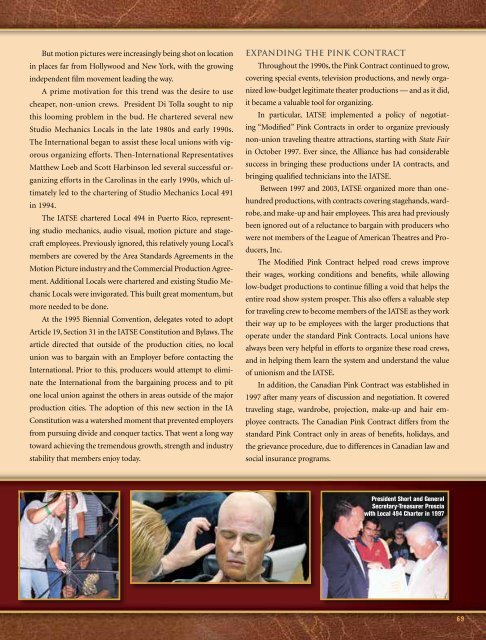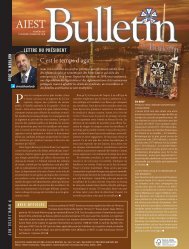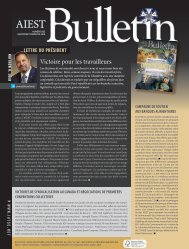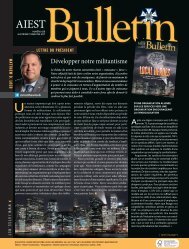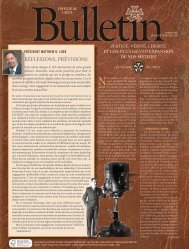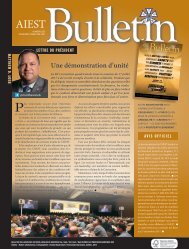IATSE-2nd2018_web
Create successful ePaper yourself
Turn your PDF publications into a flip-book with our unique Google optimized e-Paper software.
But motion pictures were increasingly being shot on location<br />
in places far from Hollywood and New York, with the growing<br />
independent film movement leading the way.<br />
A prime motivation for this trend was the desire to use<br />
cheaper, non-union crews. President Di Tolla sought to nip<br />
this looming problem in the bud. He chartered several new<br />
Studio Mechanics Locals in the late 1980s and early 1990s.<br />
The International began to assist these local unions with vigorous<br />
organizing efforts. Then-International Representatives<br />
Matthew Loeb and Scott Harbinson led several successful organizing<br />
efforts in the Carolinas in the early 1990s, which ultimately<br />
led to the chartering of Studio Mechanics Local 491<br />
in 1994.<br />
The <strong>IATSE</strong> chartered Local 494 in Puerto Rico, representing<br />
studio mechanics, audio visual, motion picture and stagecraft<br />
employees. Previously ignored, this relatively young Local’s<br />
members are covered by the Area Standards Agreements in the<br />
Motion Picture industry and the Commercial Production Agreement.<br />
Additional Locals were chartered and existing Studio Mechanic<br />
Locals were invigorated. This built great momentum, but<br />
more needed to be done.<br />
At the 1995 Biennial Convention, delegates voted to adopt<br />
Article 19, Section 31 in the <strong>IATSE</strong> Constitution and Bylaws. The<br />
article directed that outside of the production cities, no local<br />
union was to bargain with an Employer before contacting the<br />
International. Prior to this, producers would attempt to eliminate<br />
the International from the bargaining process and to pit<br />
one local union against the others in areas outside of the major<br />
production cities. The adoption of this new section in the IA<br />
Constitution was a watershed moment that prevented employers<br />
from pursuing divide and conquer tactics. That went a long way<br />
toward achieving the tremendous growth, strength and industry<br />
stability that members enjoy today.<br />
EXPANDING THE PINK CONTRACT<br />
Throughout the 1990s, the Pink Contract continued to grow,<br />
covering special events, television productions, and newly organized<br />
low-budget legitimate theater productions — and as it did,<br />
it became a valuable tool for organizing.<br />
In particular, <strong>IATSE</strong> implemented a policy of negotiating<br />
“Modified” Pink Contracts in order to organize previously<br />
non-union traveling theatre attractions, starting with State Fair<br />
in October 1997. Ever since, the Alliance has had considerable<br />
success in bringing these productions under IA contracts, and<br />
bringing qualified technicians into the <strong>IATSE</strong>.<br />
Between 1997 and 2003, <strong>IATSE</strong> organized more than onehundred<br />
productions, with contracts covering stagehands, wardrobe,<br />
and make-up and hair employees. This area had previously<br />
been ignored out of a reluctance to bargain with producers who<br />
were not members of the League of American Theatres and Producers,<br />
Inc.<br />
The Modified Pink Contract helped road crews improve<br />
their wages, working conditions and benefits, while allowing<br />
low-budget productions to continue filling a void that helps the<br />
entire road show system prosper. This also offers a valuable step<br />
for traveling crew to become members of the <strong>IATSE</strong> as they work<br />
their way up to be employees with the larger productions that<br />
operate under the standard Pink Contracts. Local unions have<br />
always been very helpful in efforts to organize these road crews,<br />
and in helping them learn the system and understand the value<br />
of unionism and the <strong>IATSE</strong>.<br />
In addition, the Canadian Pink Contract was established in<br />
1997 after many years of discussion and negotiation. It covered<br />
traveling stage, wardrobe, projection, make-up and hair employee<br />
contracts. The Canadian Pink Contract differs from the<br />
standard Pink Contract only in areas of benefits, holidays, and<br />
the grievance procedure, due to differences in Canadian law and<br />
social insurance programs.<br />
President Short and General<br />
Secretary-Treasurer Proscia<br />
with Local 494 Charter in 1997<br />
69


